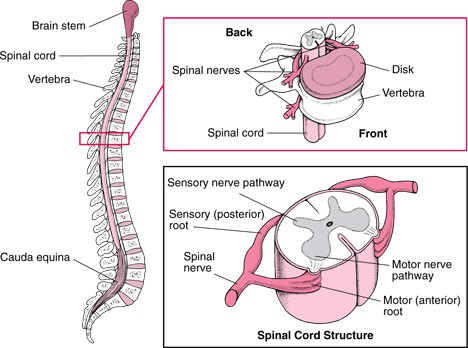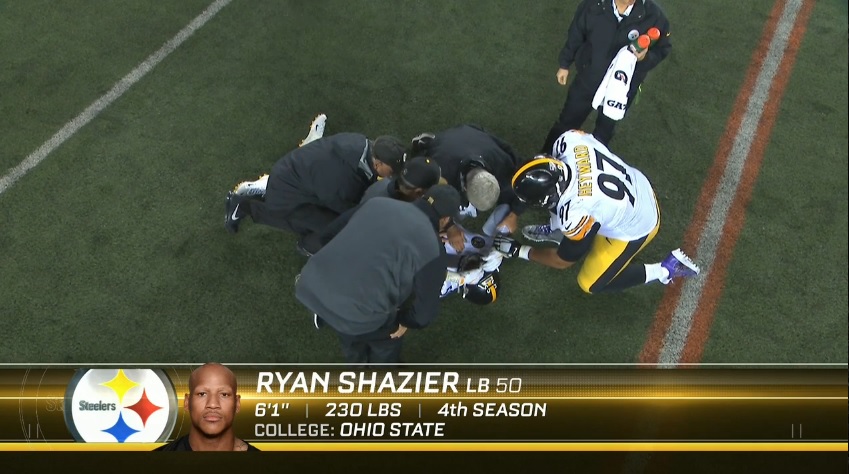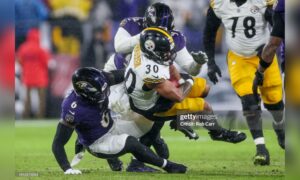You’ve probably already seen the video if you weren’t watching Monday Night Football when it first happened. Steelers star ILB Ryan Shazier, making a tackle on Bengals WR Josh Malone, fell to the ground on his right side. But instead of getting up, he grabbed at his back with his left arm and then used his upper body to turn onto his back. And then he lay there…while teammates kneeled around him, while fans wrung their hands at home, and finally while the trainers brought a backboard and the cart. All the while, not moving his legs. The announcement came that Shazier was taken by ambulance to a local hospital for further evaluation. Steelers Director of Communications Burt Lauten tweeted that no further updates would be provided.
By the end of the often brutal 23-20 Steelers victory, however, some hopeful news came. NFL Network’s Aditi Kinkhabwala tweeted and also reported live that Shazier had sustained a spinal cord contusion. The Post-Gazette’s Ed Bouchette followed that with a report that players told him that Shazier in fact had a spinal cord concussion. Finally, Burt Lauten posted an update from Steelers General Manager, Kevin Colbert:
Statement by #Steelers GM/VP Kevin Colbert on LB Ryan Shazier pic.twitter.com/WEp6wktNCu
— Burt Lauten (@SteelersPRBurt) December 5, 2017
While Shazier is being monitored overnight, we still don’t have an official diagnosis. So let’s look at spinal cord concussions and contusions while we wait for the morning to come with hopefully good news. As always, we’ll start with a quick review of the anatomy.
A stack of oval bones called the vertebrae make up the spine. Between each vertebra is a disc which acts a cushion. The vertebrae have a round opening, which forms the spinal canal. The spinal cord is a long, thick bundle of nerves beginning at the base of the brain and running the length of the spinal canal, ending in the cauda equine (horse’s tail). At each vertebral body, nerve roots exit the spinal canal: motor nerves from the front and sensory nerves from the back of the spinal cord. Motor nerves carry messages from the brain to the muscle and sensory nerves carry information back to the brain.

www.merckmanuals.com
SPINAL CORD INJURY (SCI) BASICS (courtesy of the American Association of Neurological Surgeons)
The severity of an injury depends on the part of the spinal cord that is affected. The higher the SCI on the vertebral column, or the closer it is to the brain, the more effect it has on how the body moves and what one can feel. More movement, feeling and voluntary control are generally present with injuries at lower levels.
Tetraplegia (a.k.a. quadriplegia) results from injuries to the spinal cord in the cervical (neck) region, with associated loss of muscle strength in all four extremities.
Paraplegia results from injuries to the spinal cord in the thoracic or lumbar areas, resulting in paralysis of the legs and lower part of the body.
Complete SCI
A complete SCI produces total loss of all motor and sensory function below the level of injury. Nearly 50 percent of all SCIs are complete. Both sides of the body are equally affected. Even with a complete SCI, the spinal cord is rarely cut or transected. More commonly, loss of function is caused by a contusion or bruise to the spinal cord or by compromise of blood flow to the injured part of the spinal cord.
Incomplete SCI
In an incomplete SCI, some function remains below the primary level of the injury. A person with an incomplete injury may be able to move one arm or leg more than the other or may have more functioning on one side of the body than the other.
SPINAL CORD CONTUSION
A contusion is a bruise, caused by bleeding and the resulting inflammatory response. When this occurs in the spinal cord, the swelling that results can decrease blood flow and oxygen delivery to the spinal cord, making the injury worse.
Treatment is focused on maintaining oxygenation and administering IV fluids to prevent low blood pressure and therefore low blood flow. Steroids may also help to reduce swelling. Recovery of function is typically seen within the first 72 hours. Beyond that, any residual nerve injury may be permanent, but improvement can continue for the next 6-12 months.
While spinal cord contusions sound scary, there are NFL players that have recovered and returned to play. Baltimore Ravens LB Jameel McClain suffered a spinal cord contusion in week 14 of the 2012 season and returned to play the following season.
SPINAL CORD CONCUSSION
Also known as cervical cord neuropraxia (CCN), this is a truly transient or temporary injury. It is characterized by variable degrees of motor and/or sensory loss which can resolve completely within 24-72 hours. Like many injuries, there is a grading system:
Grade 1: symptoms last less than 15 minutes
Grade 2: symptoms last between 15 minutes – 24 hours
Grade 3: symptoms last more than 24 hours
Spinal cord concussion is typically caused by a sport-related injury, with the impact occurring as an axial loading force to the head with the neck in either flexion or extension. Not surprisingly, this occurs most commonly in football. As many Steelers fans recall, Tommy Maddox suffered a similar injury in 2002 and missed only one game. Ben Roethlisberger was diagnosed with this in the final game of the 2009 season. Both QBs had a full recovery.
SO WHAT ABOUT SHAZIER?
We are still waiting for clarification on the exact nature of his injury. According to some of the Pittsburgh media, Shazier told Vince Williams that he was already experiencing return of sensation to his legs as he was carted off the field and texted him after the game to say that he would “be OK”.
We know that he did not require emergency surgery, so it is reasonable to assume that he did not sustain a fracture that was causing compression on his spinal cord.
The most promising part of the update from Kevin Colbert was the possibility that Ryan Shazier could potentially return to Pittsburgh as early as today. That would indicate that he was stable to be moved and suggests that his clinical situation was improving.
Based on the mechanism of injury and the specific motor and sensory loss Shazier appears to have experienced, I am guessing – and hoping – that he did have a spinal cord concussion, and that the information that Bouchette received was accurate.
For now, we must hope for the best for Ryan…first and foremost, for a complete recovery.








